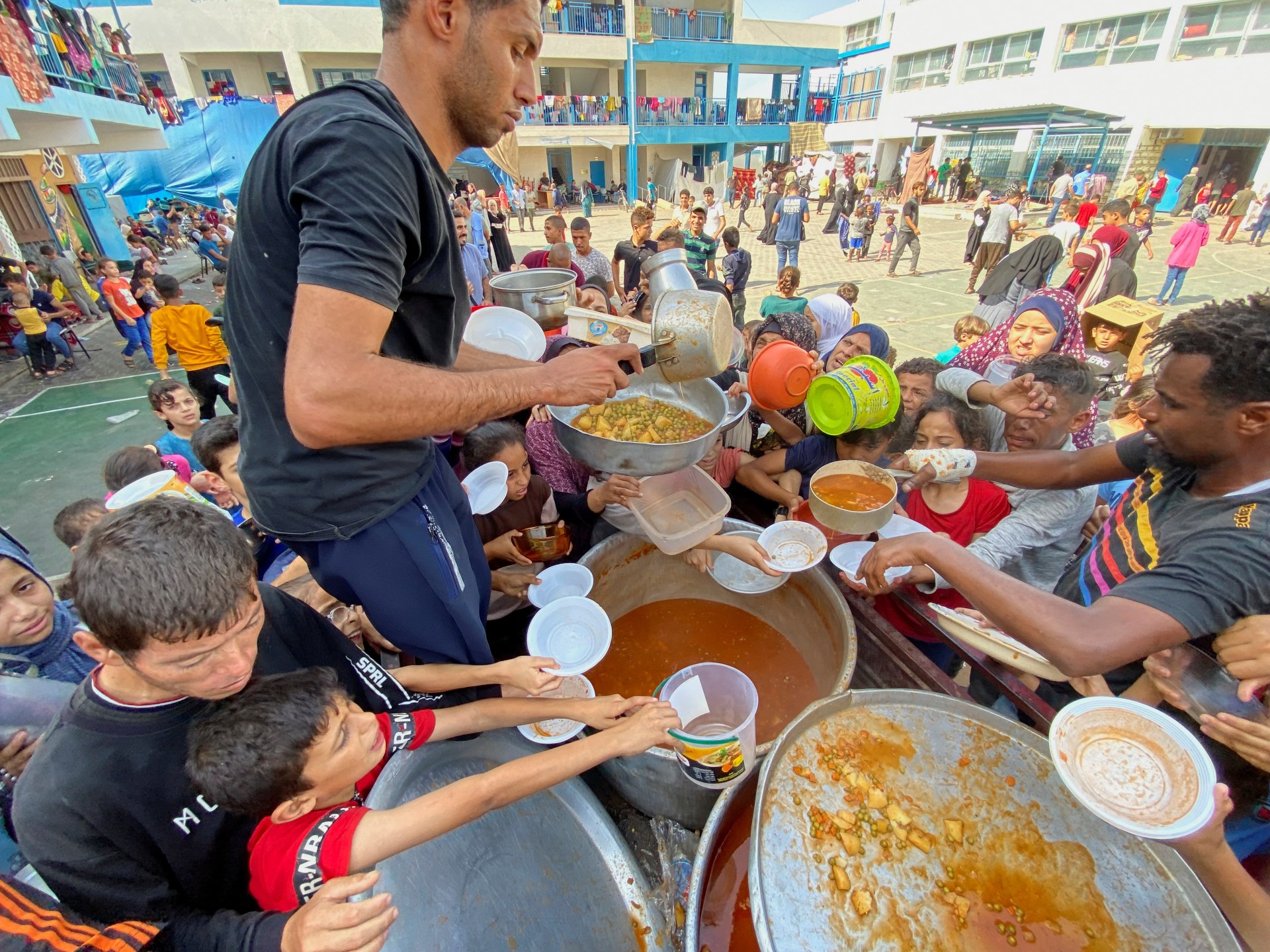Oxfam says about 104 trucks a day would be needed to deliver food to Gaza to overcome the crisis.
Oxfam has renewed its call for essential goods to enter the besieged Gaza Strip and said starvation was being used as a “weapon of war” after Israel cut off supplies of food, water, electricity and fuel to the territory.
Israel imposed a “complete siege” on Gaza after Hamas fighters launched an attack from Gaza on southern Israel on October 7, killing at least 1,400 people according to Israeli authorities.
In addition to the siege, Israel has bombarded the territory relentlessly, killing more than 6,600 people, according to authorities in Gaza, which is governed by Hamas.
United Nations officials have warned of a humanitarian catastrophe and UN agencies and pleaded for Israel to allow more aid trucks into Gaza. Fewer than 70 relief trucks have entered the impoverished territory since the war began.
In a statement on Wednesday, Oxfam said only “two percent of food that would have been delivered has entered Gaza since the total siege”.
To overcome the urgent food crisis, Oxfam said about 104 trucks a day would be needed to deliver food to Gaza.
Sally Abi Khalil, Oxfam’s regional Middle East director, said, “The situation is nothing short of horrific – where is humanity? Millions of civilians are being collectively punished in full view of the world, there can be no justification for using starvation as a weapon of war. World leaders cannot continue to sit back and watch, they have an obligation to act and to act now.”
“Every day, the situation worsens. Children are experiencing severe trauma from the constant bombardment; their drinking water is polluted or rationed, and soon families may not be able to feed them too. How much more are Gazans expected to endure?” Khalil added.
Referencing international humanitarian law, which prohibits starvation as a method of warfare, Oxfam said it was “becoming painfully clear that the unfolding humanitarian situation in Gaza fits the prohibition condemned in the resolution”.
The NGO also called for the UN Security Council (UNSC) and member states to prevent the situation from worsening and demanded an immediate ceasefire so all necessary food, fuel, water, and medical supplies can be met.
The UNSC is expected on Wednesday to consider proposals from the United States, which hopes to secure support for short pauses in the conflict to allow more aid to enter Gaza, and a Russian resolution calling for a broader ceasefire.
On Tuesday, UN agencies said they were pleading for unimpeded aid into Gaza and said more than 20 times the current deliveries were needed to support the population.
The World Health Organisation (WHO) said medicines and health supplies had been delivered to three essential referral hospitals in southern Gaza. However, they still needed to reach the north of the Palestinian enclave.
archive link: https://archive.ph/On28o



I don’t say this as a disagreement, but rather just a factchecking exercise: “white phosphorus” isn’t synonymous with “war crime” in the way that weapons like cluster bombs are. This is to say that it’s possible to use in ways that are compliant with the international rules of war, unlike a many chemical weapons and the aforementioned cluster bombs.
Again, to be crystal clear: I am not on team human immolation. We all know that it is strategically impossible to deploy phosphorus in one of the most densely populated regions on Earth without deliberately choosing to immolate civilians. My hangup here is that the gravity of the situation will not be conveyed to a skeptic if you don’t spell out the facts in exacting detail: on October 11th, Israel deployed an airburst of white phosphorus over Gaza city. White phosphorus deployed on a city with a population density of 21,000/sq. mile. Big time classic warcrime.
Cluster munitions aren’t synonymous with war crime, either. There’s states which have banned cluster munitions but it’s not in the Geneva convention.
Using cluster munitions in civilian areas is certainly a war crime because they’re very indiscriminate, incapable of precision due to their large area of effect. But using them for their intended purpose such as trench systems or, just recently, Russian airfields, is perfectly a-ok.
White phosphorous is actually very common: It produces very nice smoke screens, temporary lights, as well as tracer rounds. Standard rules regarding incendiary munitions apply, including not using it anywhere close to civilians. Rules around chemical weapons only apply if it’s used in a way that actually exploits its toxicity which is unlikely as there’s way more potent and easier handled chemical weapons. I’d be more worried about hydrazine.
You do see my point, though, right? White phosphorus isn’t the kind of weapon that gets its own international convention. The focus point needs to be the manner of usage rather than the mere fact of usage. Failing to do this will lead many to assume that a mountain is being made of a molehill.
I not only see it I completely agree. On the flipside though you don’t really ever see white phosphorous mentioned in the press when it’s not in the context of using it where it shouldn’t be used, I doubt your run off the mill journalist even knows that those smoke screens are phosphorous. Cluster munitions have a way worse rep in that regard.